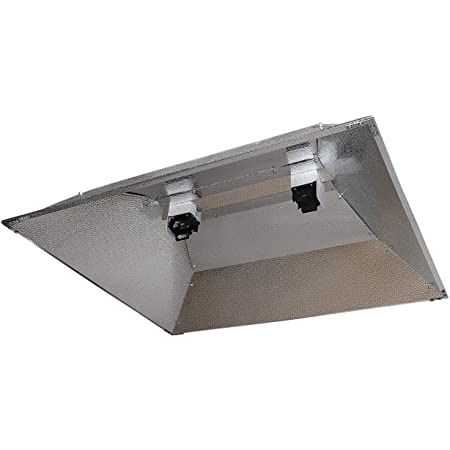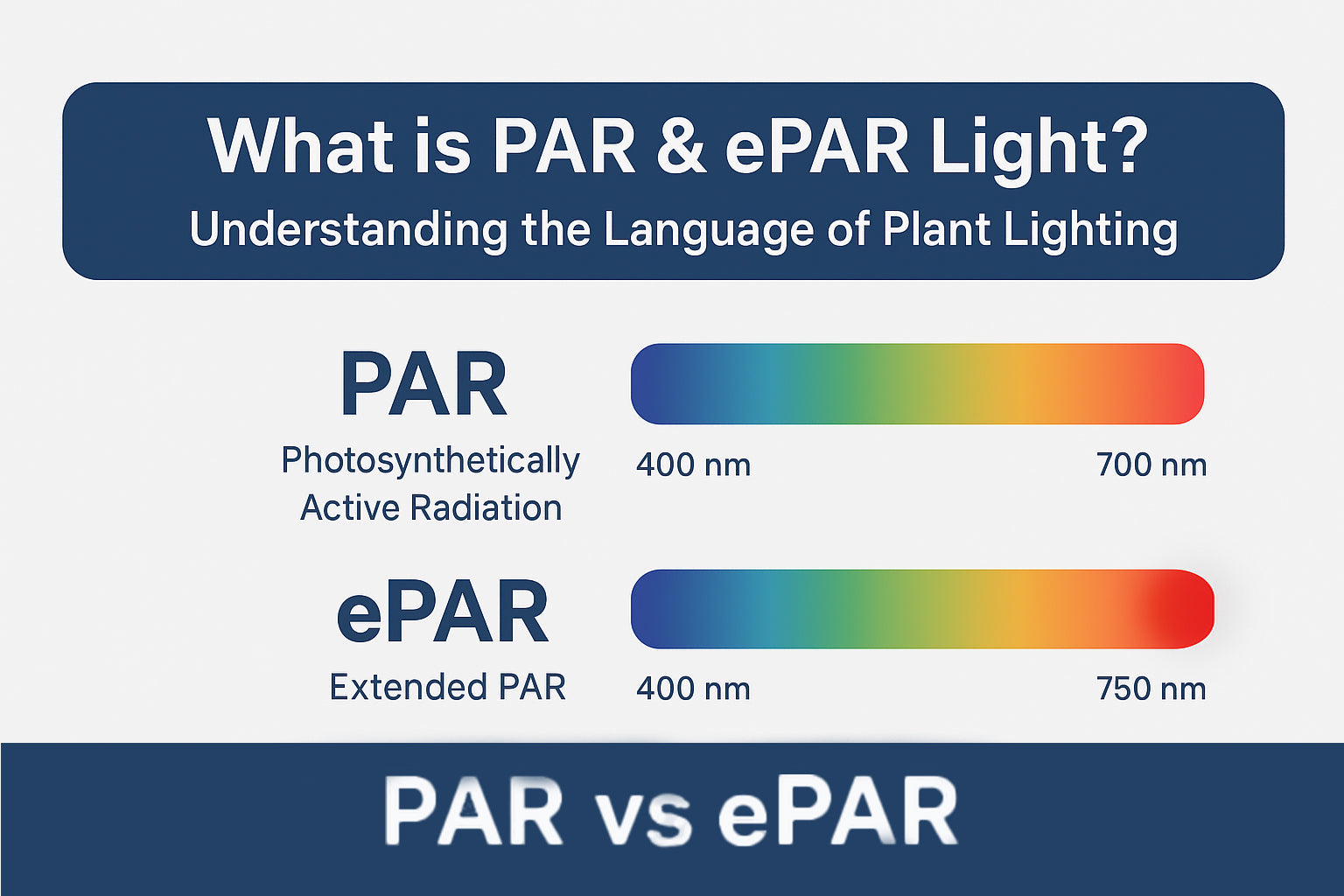
Choose The Right Grow Light Reflector for Your Grow Tent
Grow light reflectors should not be underestimated. Especially if you are an indoor grower who depends on indoor grow lights. Because these do come with a lot of advantages.
Most experienced growers might be well aware of the benefits and working of light reflectors.
But most don't even know the slightest thing about the reflector for growing light. We know this is the only reason that led you right here.
Consider yourself lucky because, in this article, you'll learn about every possible thing related to growing light reflectors.
This article comprises different parts, i.e., What exactly is a grow light reflector? Importance and various types of light reflectors. And lastly, which light reflector is best for your indoor growing?
- Part 1: What is a Grow Light Reflector?
- Part 2: Importance of Reflectors for Grow Lights
- Part 3: Different Types of Grow Light Reflectors
- Part 4: What Type of Grow Light Reflector is Best for Your Grow Tent?
Let's get to know about reflectors for growing light first.
What is a Grow Light Reflector?
Grow light reflectors, often known as light hoods, are used to increase the reflective efficiency of a light source.
These reflectors come in different varieties and sizes. That is the genuine concern of most growers, leading them to think about which reflector they need to put inside the grow room.
Well, that's another story that we'll discuss further in upcoming sections.
The hood or shade type of thing helps light contact the plants directly. When it comes to indoor gardening, grow light is the only alternative to sunlight.
The difference is sunlight is free, and grow lights consume a lot of electricity. If you're not using them efficiently, it will cost you a lot. All you profit from your hard work will be paid via electricity bills.
That’s where reflectors come to rescue you in these situations. Reflectors don’t let the grow lights bounce back from the ceiling to plants.
Importance of Reflectors for Grow Lights
As we described above, grow lights are the only alternatives to sunlight. Without indoor grow lights, it would be impossible for indoor growing to process photosynthesis and get carbon dioxide from the atmosphere.
The first and foremost benefit of using a grow light reflector kit inside a grow room is the efficient use of electricity. You wouldn't want to end up spending all your profits on electricity.

The primary purpose of full-spectrum grow lights is to provide efficient energy to your indoor plants. And light reflectors make sure that your plants get the equally efficient intensity of light. In short, reflectors spread the light in uniformity.
When your plants get enough light, they grow healthy in all aspects, resulting in continued growth and bigger yields.
The benefits of reflectors don’t stop here yet. There’s plenty more!
When your plants uniformly receive light, they efficiently consume water, carbon dioxide, and nutrients. Sometimes, you often observe that plants in shaded areas are less healthy than the others. That’s why even light on plants is so crucial in every stage of growth.
Different Types of Grow Light Reflectors
At this point, you’re now familiar with the grow light reflector. Now, it’s time to dive deep into the different types of grow light reflector kits.
Like different varieties of grow lights, reflectors also come in various types and shapes, and each of them has its advantages and disadvantages.
The shapes of reflectors depend on which type (Fluorescent, HPS/HID, and LED) of grow lights you are using in your grow tent kit.
Apart from different shapes, reflectors come in different sizes. It all depends on your crop size, whether for 2, or 3 plants or groups of 30, or 40 plants.
There are many types of grow light reflectors available in the markets and online. Here, we're mentioning those reflectors which are pretty famous and have had massive demand over the years.
Alright, a few of them are as follows:
- Air-Cooled Reflectors
- Non-Air-Cooled Reflectors
- Wing Reflectors
- Hood Reflectors
- Parabolic Reflectors
Air-Cooled Reflectors
The air-cooled reflector is one of the most common and widely used reflectors, often known as cool-tube reflectors.
As the name suggests, air-cooled reflectors help to keep your growing area cool by removing the heat through a duct air fan. In short, there’s an opened face side of this reflector which is attached through duct ventilation.

Image Source: amazon
The primary purpose of air-cooled reflectors is to remove the excessive heat generated by the HID or any other lights and keep the environment cool. It also increases the life of the bulb by keeping the bulbs cool.
Advantages of using Air-Cooled Reflectors:
- It provides more minor to no damage to your crop, especially for small growing areas
- Increases the life of the light bulbs
- Provides an optimal level of heat as required by the plants
Disadvantages of using Air-Cooled Reflectors:
- Can be a bit expensive as compared to other reflectors
Non-Air-Cooled Reflectors
Non-air-cooled reflectors are just the opposite of air-cooled reflectors. Both functionalities are precisely the same, but non-air-cooled reflectors don’t have the option to remove excessive heat generated by the light bulbs.
Advantages of Using Non-Air-Cooled Reflectors:
- Good for hydroponic growing
- Cheap as compared to Air-Cooled reflectors
Disadvantages of Non-Air-Cooled Reflectors:
- You cannot control the temperature environment
Wing Reflectors
Wing reflectors are best for new growers who have just started their journey in indoor gardening. They are cheaper than others and simple to use. That’s why it’s the best choice for beginners.
So, why is its name a wing reflector? It’s because of its shape. It’s an open-designed reflector that can be adjusted according to your growing space.

Image Source: amazon
These are made up of reflective aluminum to adjust the wings according to your needs. Since it’s made up of aluminum, it absorbs the heat intensity.
Most of the wing grow light reflectors come with sockets and cord lamps. All you need is to hang the reflector with a light bulb, and you’re good to go.
Advantages of Using Wing Reflectors:
- You can adjust its wings according to your grow space
- Open-ended from both sides, can’t trap heat inside the reflector
- You can also change the color spectrum with wing reflectors
Disadvantages of Wing Reflectors:
- Since it is open-ended and doesn’t trap heat inside the reflector, but builds more heat inside the growing environment
Hood Reflectors
Almost every reflector contains a hood that makes them reflectable. Hood reflectors are specially designed HPS lights and also include domed ceilings.
This type of reflector is suitable for those growers who require a good intensity of heat.
Because of their hooded and domed ceilings, they produced more heat that reflected plants.

Image Source: Amazon
Advantages of Using Hood Reflectors:
- Best for those who need a suitable intensity of grow light, like 1000W LED grow lights
- Affordable price range
Disadvantage of Hood Reflectors:
- Since they produce more heat, can’t be used for sensitive growing.
Parabolic Reflectors
The purpose of parabolic or paraboloid reflectors is similar to other grow light reflectors but different in shape. The rounded or umbrella-like shape makes a uniform color footprint. It’s suitable for both small and moderate growing spaces.

Advantages of Using Parabolic Reflectors:
- Support good light distribution
- Covers every inch of growing space
- Produce good intensity of UV grow light.
Disadvantages of Parabolic Reflectors:
- Only suitable for small spaces.
What Type of Grow Light Reflector is Best for Your Grow Tent?
So, you’ve got everything about the grow light reflector. You must be wondering why there are so many options available, and now you’re confused about choosing any of them.
Don’t worry. It’s not a big deal either. We are here to guide you on which one you should choose for your grow tent.
Remember, you can only choose the suitable light bulb reflector when you know which light system and growing space you’re about to utilize. Because there are so many grow light options available for your grow tents.
If you’re planning to go with HID grow lights, you might need the following reflectors according to your growing space:
- Wing reflector can be a good option if you need simple coverage
- Since HID grow lights produce more intensity, hooded reflectors also can be a good option for those who require a high power of light energy
- Air-Cooled reflectors are always the best option for any growing space, and every grow light.
Or, if you've opted to use fluorescent lights, then hooded and non-air-cooled reflectors would be good options. The reasons for using these reflectors for fluorescent lights are as follows:
- The first and most prominent reason for using non-air-cooled reflectors is that fluorescent lights have less heat intensity than HPS\HID grow lights. Therefore, fluorescent lights don’t get much heated. It almost has the same heat intensity as compared to LED grow lights.
- The second thing is fluorescent tubes come in reasonable sizes. These lights can easily adjust in any type of reflector by keeping the size of the tubes in mind. This means you have to get a light bulb reflector according to your fluorescent roads\tubes.
- There is a minimum chance that heat gets trapped inside the hooded reflectors. All thanks to fluorescent tubes that generate less amount of heat.
You will be wondering why need reflectors; If they don't generate too much heat. If you don’t use fluorescent reflectors, you’ll waste too much light and electricity.
Remember, the best option for any light system is an air-cooled reflector if it’s possible for your condition and budget. It’s all depends on what you need.
Once you have made up your mind, it would be easier to decide which option you should go for.
Or, if you don’t want to confuse yourself with reflectors, you can go with LED grow lights. LED grow lights don’t need any type of reflectors at all. Plus, LED grow lights are more energy-efficient as compared to HID and fluorescents.
Related Posts
Learn the Importance of Adding CO2 for Grow Tent
Featured Products
Blog Posts
Contact Us with Any Idea!
- Choosing a selection results in a full page refresh.
!
































